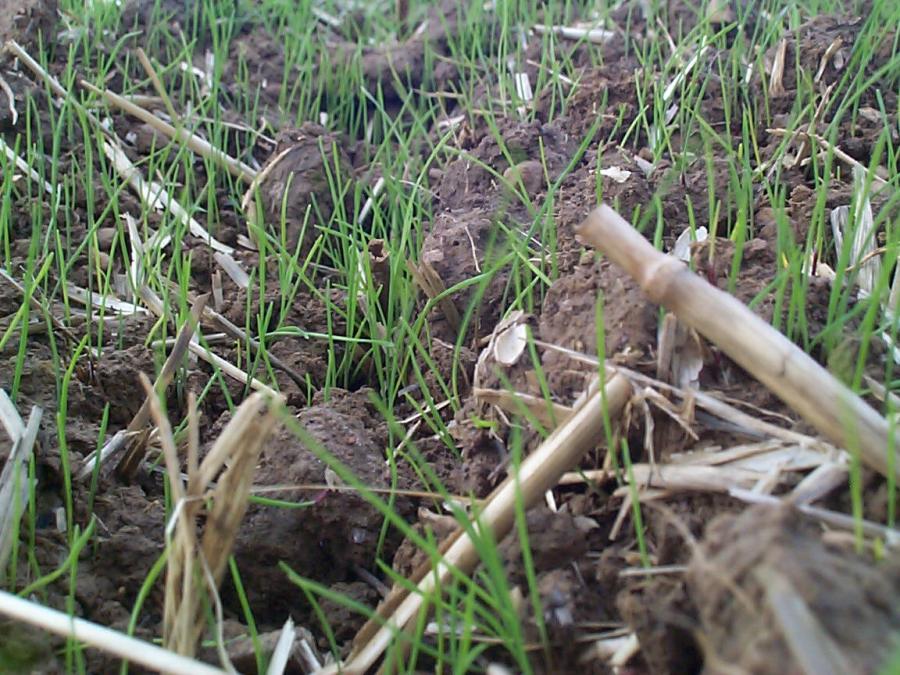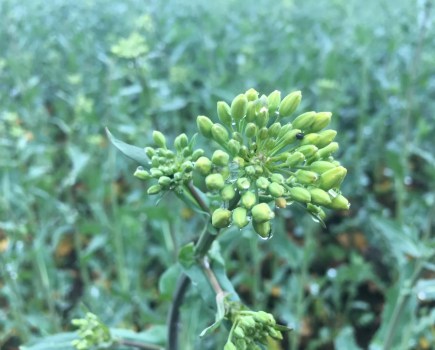Effective control of problem weeds outside the growing crop is fast becoming an agronomic essential rather than the valuable ‘weather-permitting’ bonus it has primarily been to date. Indeed, with financial pressures as acute as they are today, in many cases it could be critical to the continued viability of winter cereal production.
This is the reality Monsanto Crop Protection technical manager, Barrie Hunt believes needs to be fully embraced by agronomists and growers across the country.
Wherever I go these days the arable challenge is far more one of resistance management than weed control,” he pointed out. “And it’s continuing to grow and spread. It wasn’t so long ago that black-grass could be knocked on the head with a single in-crop spray that included Atlantis But many growers today are finding the revolutionary chemistry of little more than 10 years ago now gives them barely 20-40% control.
With every 100 ears/m2 of black-grass known to knock wheat yields by 1 t/ha, effective control of this weed – not to mention a number of other problem grasses and broadleaves – is clearly crucial.
Yet across much of the country even the most robust and costly in-crop treatment programmes are no longer sufficient to prevent damaging winter cereal yield lossses and a progressive increase in weed populations over the years.
“This is one of the single most important issues we face in our crop production,” Barrie Hunt insisted. “All the more so with feed wheat values at little more than £100/t and declining opportunities for control in key break crops like oilseed rape.
“There are no new herbicide actives on the horizon either,” he added. “Mainly because the costs of bringing new chemsitry to the market are so astronomical and the regulatory hurdles so high. At the same time, there’s growing legislative pressure on the ones we have. We’ve already lost straight IPU and CTU, and there are serious doubts several other key chemicals.
Against this background, a different approach is clearly essential; one which Barrie Hunt is adamant must place far more reliance on the period between the ripening of one crop and the emergence of the next.
“We have to give the out-of-crop part of the year as much care and attention in our arable management as the in-crop part,” he stressed. “We’ve got to stop treating the time between the end of one crop and the beginning of the next as a convenient agronomic breather. Instead, we need to see it as a fundamental component of our whole weed management cycle; a key foundation for the future.
“With the sort of weed pressures and costs many growers are facing, controlling weeds outside the growing crop needs to become a key driver of their agronomy. One of its great advantages is there are no compromises needed in chemical formulation, spray timing or spraying practice to achieve selectivity. Nor is there any crop to physically interfere with the target.
“You simply employ the most effective total weed killer – glyphosate. Which also happens to be far more economic than any in-crop herbicide and continues to remain resistance-free in the UK.”
Barrie Hunt sees eliminating at least one – ideally two – good flushes of weed growth ahead of crop emergence as the imperative that should drive sowing time and, indeed, the whole rotation. In addition to resistance problems he considers this essential given the extent to which climatic variability can limit early winter spray days and larger acreages managed with fewer men and machines can easily compromise spray timings.
“Yes, the weather can get in the way of pre-planting control with glyphosate too,” he accepted. “But we know that pre-harvest Roundup is an excellent way of controllling perennial weeds.
Equally, the correct harvesting and cultivation strategies will preserve enough soil moisture to stimulate good flushes of annual weed growth ahead of drilling in all but the most serious of droughts.
“We also know that modern Roundup formulations give the greatest possible flexibility to deal with challenging autumn conditions. They’re to proven to perform under hot and dry conditions, for instance. They have a one hour rainfastness rating and a six hour cultivation interval for annual grass weeds. And they carry label approval for multiple stubble applications (up to 1800 g ai/ha) plus extra pre-em use.
“Finally, we know it will rain at some stage. So wherever grass weeds are a sertious problem patience has to be the key. Growers must be prepared to delay sowing until mid-October or early November wherever necessary to secure sufficient out-of-crop control. And wherever conditions get in the way of successful late autumn establishment they should be flexible enough to switch to spring cropping.
“As well as being more profitable than badly black-grass infested winter crops, spring cereals give a huge bonus for the rotation in allowing weed seed burdens to be massively reduced by extended out-of-crop cultural controls. Providing weed control is not compromised, they may also be very valuable in enabling soil structural and other improvements through cover cropping.”




